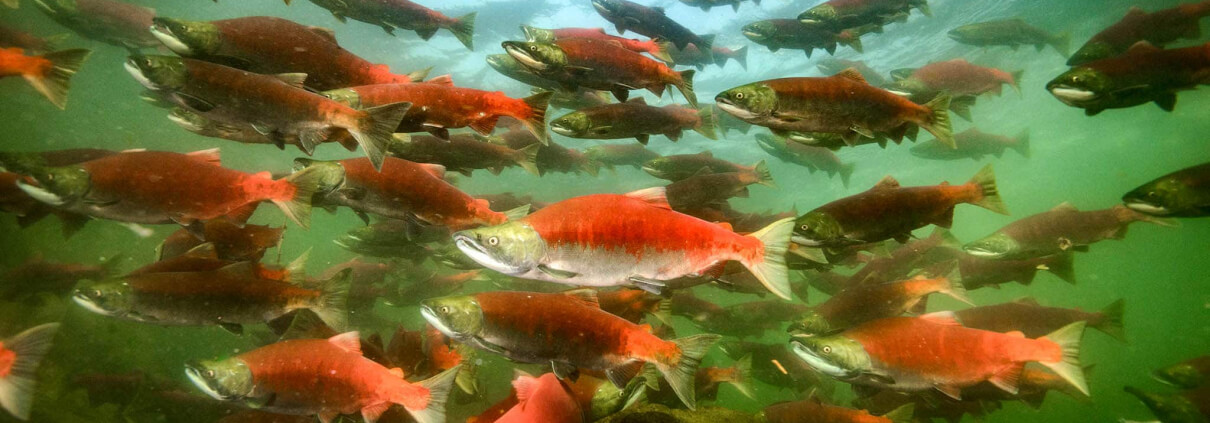Restoring the Lower Fraser
The lower Fraser comprises vital habitat for Chinook and other salmon species. But it is the most densely populated area of British Columbia, and the development and impacts that arise from that are challenging. Fortunately, there is a network of stewards that are supported by PSF donors like you. If you would like to donate to help restore the Lower Fraser, click here.
Here are some of their stories:

Photo: Dave Scott holds a Chinook juvenile found in the estuary
Who: Raincoast Conservation Foundation
Where: Fraser Estuary
Estuaries have murky water that help young salmon hide from predators, while supporting a buffet of insects and shrimp-like creatures for them to chow down on. Raincoast, a partner through the Salish Sea Marine Survival Project, is studying just how critical estuary habitat is for Fraser Chinook. “We’ve learned that juveniles from different Fraser stocks all use the estuary at different times for a pretty extended period, from about March until end of August. When they return as adults, these different stocks provide a consistent supply of food for Southern Resident Orcas when they’re in the Strait of Georgia. Our research highlights the significance of estuary habitat and the potential for damage if it’s not protected. It’s also helped us focus our restoration efforts,” said Dave Scott, biologist for Raincoast. Raincoast is embarking on a major restoration effort over the next five years with the help of Coastal Restoration Funds to reconnect Fraser estuary habitats currently disrupted by dikes, jetties and causeways.

Photo: FVWC and partners conduct the first winter seine to assess fish populations
Who: Fraser Valley Watershed Coalition (F.V.W.C.)
Where: Fraser River Floodplain/ District of Hope
Getting bigger faster can help young Chinook survive when they reach the ocean. But, extensive development along the Fraser has greatly limited off-channel habitat where juveniles can pull over and fuel up on their journey downstream. “With our partners, we’re converting an old gravel pit into functional salmon habitat – an area roughly the size of 91 hockey rinks. Currently, Chinook that enter the pit are becoming trapped when Fraser River flows recede, with many dying from lack of water, reduced oxygen and food availability, and from predators like invasive carp also found in the pit. This project will create a permanent connection that will let Chinook freely move in and out of the pit and allow them to “bulk up” on insects that fall from trees and shrubs, supporting this intense feeding and growth period. Restoration of this pit will be important for Chinook and all Pacific salmon as they migrate out of the Fraser Canyon and prepare for their journey to the Salish Sea.” Natashia Cox, Program Director, FVWC

Photo: A teacher and students release salmon fry raised in their classroom
Who: Stave Valley Salmonid Enhancement Society
Where: Silverdale Creek Wetlands/Mission
Farming practices in the Silverdale Creek Wetlands have stripped the habitat of its natural diversity and function by flattening the landscape, planting canary grass to support cattle, and stocking ponds with invasive large mouth bass for fishing. “These bass gobble up anything that swims by, including juvenile salmon. So, over the past decade, our volunteers have worked closely with the Fraser Valley Watershed Coalition to create stream channels for salmon, plant different types of vegetation and allow the system to flood and drain like it did 10,000 years ago. Now the native fish can migrate before the system drains, and the trapped bass are getting eaten by birds. So many Fraser wetlands have been filled in to create industrial parks, but this is a 112 acre area that’s being restored for salmon.” Jim Taylor, volunteer and founder, SVSES



